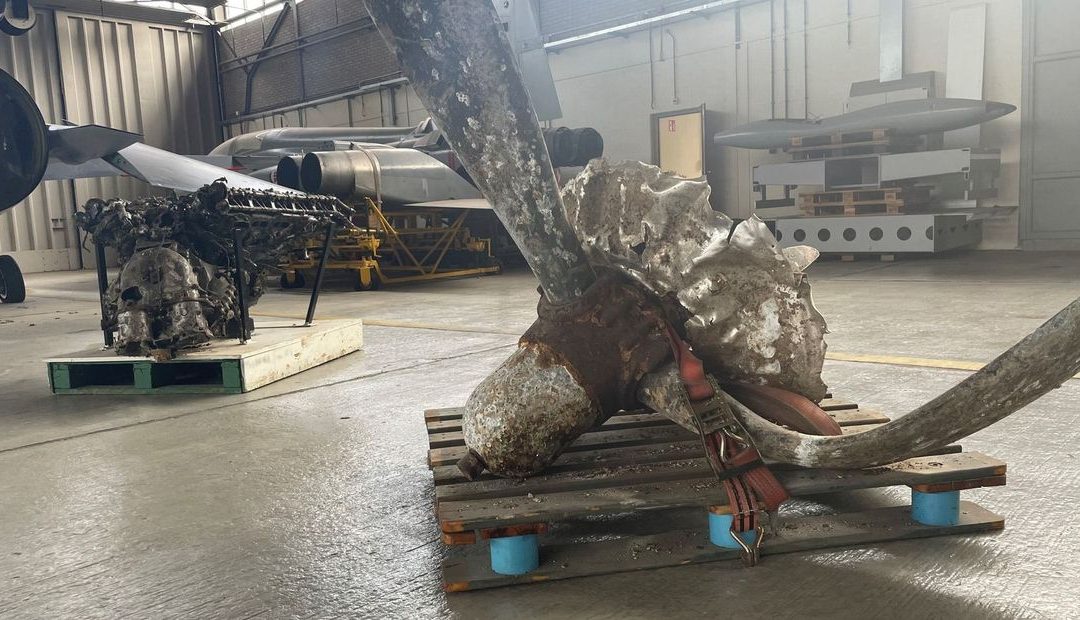Picture: Omrop Fryslan, Jantine Weidenaar
For years, work has been ongoing behind the scenes to salvage the Lancaster ED603 from the IJsselmeer, and historical research has been conducted on the wreckage.
Retrieving a historic aircraft from the IJsselmeer is no simple task. Factors such as conditions, safety, and the likelihood of success must be considered. The Lancaster ED603 crashed in June 1943, approximately six kilometers from Breezanddijk in the IJsselmeer, at a depth of about four meters.
In March 1996, the aircraft was accidentally discovered by Volendam fishermen from the VD64. They reported the location to the authorities and were able to provide a picture with the serial number of the aircraft. With this information, it was quickly determined that it was a Royal Air Force (RAF) aircraft from 1943.
Using sonar images and underwater cameras, attempts were made to gain insight into the 80-year-old Lancaster. However, due to the murky waters of the IJsselmeer and the fact that much of the wreckage had sunk into the sand, many questions remained.
The primary question was the whereabouts of the three missing airmen. Several weeks after the Lancaster crash in 1943, four of the seven crew members had already washed ashore on the Frisian coast. They were buried in Stavoren, Hindeloopen, and Workum.
Significant technical work
After conducting the necessary research and creating a plan, practical preparations for the salvage operation began in recent weeks. A large quantity of materials was shipped to the middle of the IJsselmeer to construct a cofferdam around the old Lancaster.
A cofferdam is a type of enclosure made by setting up sheet piles in a body of water, which can be in a lake or a river.
In August, the pumps were activated, allowing the Lancaster to see daylight for the first time. The actual salvage of the wreckage began in September. Because this process needs to be carried out with great care, defense authorities allocated several weeks for it.
The goal is to retrieve the entire wreckage from the seabed. It is possible that parts of the aircraft may be displayed in museums at a later time, but that discussion will occur after the salvage operation.

